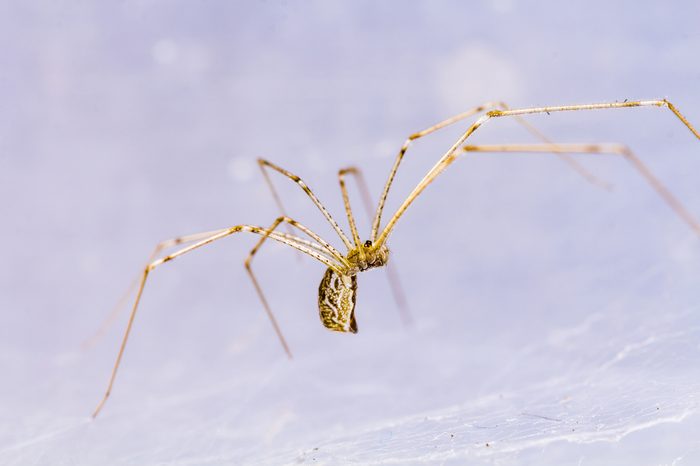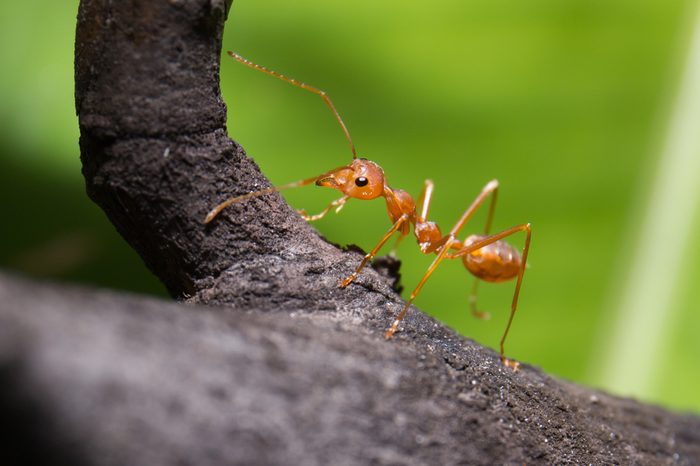Bee or Wasp Stings
You need to act fast to minimize the pain from a wasp or bee sting. Wasps don’t lose their stinger when they strike, which means they can sting you repeatedly. Bees, on the other hand, do leave their stinger behind. While bees can’t sting multiple times, that stinger can continue to inject venom into the injury.
“It’s important to remove the stinger right away to decrease the amount of venom injected and reduce the risk of a foreign body reaction, although these are rare,” says Heather Hawthorne, M.D., a Doctor on Demand in the Los Angeles area. “Be sure to wash the area with soap and water, and then quickly apply an ice pack for 20 minutes to reduce pain and swelling.”
Over-the-counter ibuprofen such as Advil is usually adequate to control the pain, swelling and redness if needed. Topical antihistamines such as Benadryl Extra Strength Itch Relief Stick work well to control itching.
It’s important to watch for signs of a secondary bacterial skin infection, which can happen after any type of insect sting or bite. Symptoms may include streaking redness, pus draining from the site or worsening pain. These usually show up three to five days after the sting and require medical attention. Check out these tips that will help you avoid getting bit or stung in the first place.

Tick Bites
Ticks are known to spread serious illnesses like Lyme disease. The first course of action, according to the Mayo Clinic, is to remove the tick with a pair of tweezers and save it in an alcohol-filled container to show your doctor. The faster you remove the tick, the less likely it is that it will be able to transmit disease-causing germs.
Treat the bite with alcohol, and keep an eye out for a bullseye-shaped rash or flu-like symptoms which could indicate Lyme disease. And be sure to pick up a good pair of tweezers. Here’s what to do if you find a tick in your house.

Bed Bug Bites
If you end up with a zigzag pattern of welts on your body, it could be the work of bed bugs. According to the American Academy of Dermatology, washing with soap and water and using an over-the-counter corticosteroid cream could help with the worst of it. If you develop an infection or an allergic reaction to the bites, you might require prescription intervention with antibiotics or antihistamines. Learn the secrets to keeping bed bugs at bay.

Mosquito Bites
If you’re out and about in the evening, it’s almost impossible to avoid getting one of these itchy red welts. But if you’re that tasty to mosquitoes, research suggests that taking a little Zyrtec could help reduce the sting of their bites. “Over-the-counter products with pramoxine, such as Sarna Sensitive lotion, work well to control itching,” Hawthorne says.
Not sure what bit you? Here’s how to identify bug bites.

Sandfly Bites
“Sandflies may be tiny, but their bites have a mighty impact, causing annoying pain and itching,” Hawthorne says. “Ice is a great numbing agent for this type of pain. Rub an ice cube in a circular motion over the bite several times a day to control the pain. Use antihistamines to control itching.” You can also try a reusable ice pack.

Spider Bites
Most spider bites create just a little pain and swelling that can be treated with a cold compress and over-the-counter pain meds such as ibuprofen. If you’ve been bitten by a brown recluse or black widow spider, or you experience abdominal cramping or extreme pain at the bite, seek emergency care. This is why you should never kill a house spider.

Flea Bites
“All insect bites and stings trigger a similar type of inflammatory response,” Hawthorne says. “So regardless of what gets you, ibuprofen and ice are great for pain and swelling, while antihistamines like Benadryl or Zyrtec usually do a good job of controlling any itch. Although most local reactions go away without any treatment, it’s important to watch for symptoms of severe allergic reactions and bacterial skin infections which require medical treatment.”
Keep fleas and other pests away by following these ways to bug-proof your home.

Fire Ant Bites
These fierce ants can swarm and leave blistered red bites in their path. In addition to the typical ice, antihistamine and ibuprofen protocol, Texas A&M University entomologist Bastiaan M. Drees, Ph.D., recommends keeping some bleach on hand. Treat the area with a mixture of half-bleach and half-water to help soothe the bites. Next, check out the most dangerous bugs you need to watch out for.